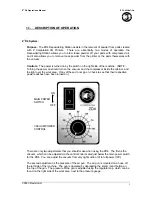Reviews:
No comments
Related manuals for DOUBLE P255

Pronto
Brand: Magicard Pages: 26

3260
Brand: QMS Pages: 194

D4
Brand: Z Corporation Pages: 4

Phaser 7300DN
Brand: Xerox Pages: 44

LP441s
Brand: Oki Pages: 76

MPS710c
Brand: Oki Pages: 99

PJ-6000 D
Brand: MF DIGITAL Pages: 2

TEMO ONLINE
Brand: Posnet Pages: 2

LE810DTUPS
Brand: Oki Pages: 20

CSN-58III
Brand: Cashino Pages: 61

LaserPro X500 III-80Y
Brand: GCC Technologies Pages: 127

da Vinci 2.0 Duo
Brand: XYZ Printing Pages: 25

VIP-5000 Series
Brand: Daktronics Pages: 62

OPT-C0240
Brand: MIMAKI Pages: 2

TS500P-3200
Brand: MIMAKI Pages: 130

2
Brand: Gerber Pages: 57

Ricoh 3000
Brand: AnaJet Pages: 6

12V
Brand: Axiohm Pages: 67

















